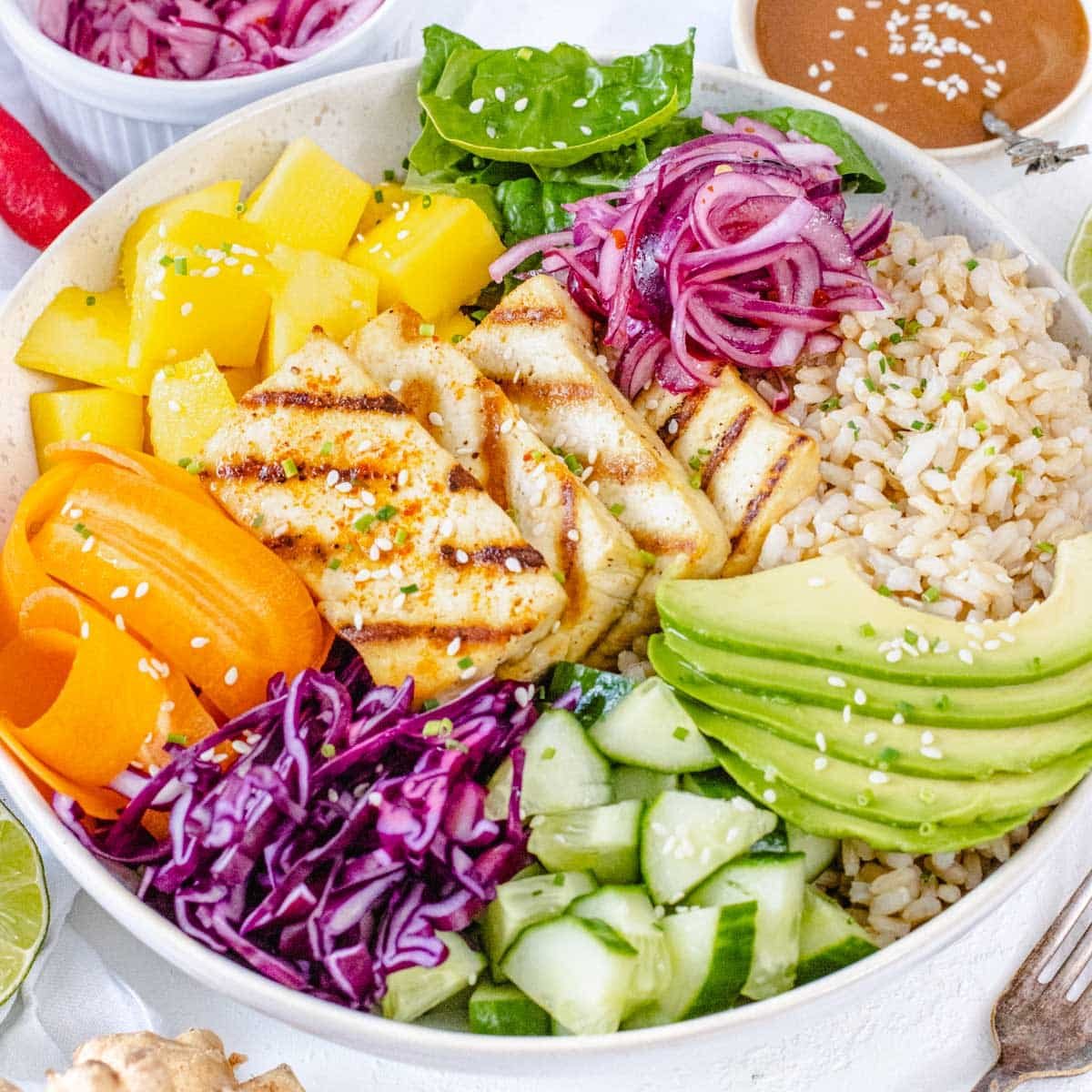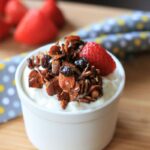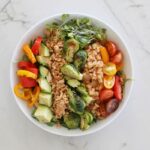Unleash your inner chef and embark on a culinary journey to create the ultimate Paleo Buddha Bowl! This vibrant and nutritious dish is more than just a meal; it’s a canvas for creativity, a testament to healthy eating, and a delicious adventure for your taste buds. We’ll guide you through selecting the perfect base, choosing protein and healthy fats that satisfy and energize, and crafting a symphony of colors and flavors with an array of nutrient-rich vegetables. Prepare to discover the art of building a bowl that’s not only visually stunning but also packed with the goodness of Paleo principles.
From the foundational elements to the finishing touches, we’ll explore the nuances of crafting a Paleo Buddha Bowl that’s as unique as you are. We’ll delve into the world of Paleo-friendly ingredients, offering a variety of options to suit your preferences and dietary needs. Learn to master the art of layering textures and flavors, creating a balanced and satisfying meal that nourishes your body and delights your senses. Get ready to elevate your culinary skills and transform your lunch or dinner routine into a celebration of health and flavor.
Paleo Buddha Bowl Basics
A Paleo Buddha Bowl is a vibrant and nutritious meal built on the principles of the Paleo diet, emphasizing whole, unprocessed foods. It’s a visually appealing and customizable dish, perfect for showcasing a rainbow of fresh ingredients. The key is to create a balanced combination of healthy fats, lean protein, and plenty of colorful vegetables.
Paleo-friendly ingredients are the cornerstone of a successful Buddha Bowl. These ingredients are naturally occurring, free from refined sugars, grains, and legumes, reflecting the core tenets of the Paleo diet. The emphasis is on whole, unprocessed foods that our ancestors would have consumed.
Common Paleo-Friendly Ingredients
Choosing the right ingredients is paramount to creating a flavorful and nutritious Paleo Buddha Bowl. A wide array of options ensures variety and caters to different tastes. Consider these options when constructing your bowl:
- Protein Sources: Grilled chicken or fish (salmon, tuna), grass-fed beef, bison, hard-boiled eggs, shrimp.
- Healthy Fats: Avocado, olive oil, nuts (almonds, walnuts, pecans), seeds (pumpkin, sunflower, chia).
- Vegetables: Sweet potatoes, broccoli, Brussels sprouts, carrots, bell peppers, spinach, kale, cucumber, tomatoes.
- Fruits (in moderation): Berries (strawberries, blueberries, raspberries), apple slices.
Paleo Buddha Bowl Variations
The beauty of a Buddha Bowl lies in its adaptability. Three variations showcase the diverse flavor profiles achievable with Paleo-friendly ingredients.
- Mediterranean Paleo Bowl: Imagine a vibrant bowl featuring grilled chicken breast, sliced avocado, a medley of chopped cucumbers and tomatoes, Kalamata olives, crumbled feta cheese (if dairy is tolerated), and a lemon-herb vinaigrette. The flavors are bright, fresh, and reminiscent of the Mediterranean coast.
- Spicy Southwest Paleo Bowl: This bowl bursts with bold flavors. Picture seasoned ground bison, roasted sweet potatoes, black beans (if legumes are included in your Paleo variation), shredded red cabbage, corn (again, depending on your Paleo approach), and a spicy chipotle dressing. The heat from the chili adds a delightful kick.
- Asian-Inspired Paleo Bowl: This bowl offers a delicate balance of flavors. Visualize grilled salmon, shredded carrots, steamed broccoli florets, edamame (if legumes are included in your Paleo variation), a sprinkle of toasted sesame seeds, and a light ginger-soy dressing (ensure it’s soy sauce-free if adhering strictly to Paleo principles). The subtle sweetness and savory notes create a harmonious blend.
Nutritional Comparison of Base Ingredients
Understanding the nutritional benefits of different base ingredients is crucial for creating a balanced and healthful Paleo Buddha Bowl. The following table provides a simplified comparison, focusing on key nutrients:
| Base Ingredient | Protein (g/100g) | Fiber (g/100g) | Vitamin C (mg/100g) | Healthy Fats (g/100g) |
|---|---|---|---|---|
| Sweet Potato | 2 | 3 | 2 | 0.1 |
| Broccoli | 3 | 3 | 89 | 0.4 |
| Avocado | 2 | 7 | 10 | 15 |
| Salmon | 20 | 0 | 0 | 13 |
Recipe & Step-by-Step Creation

Crafting the perfect Paleo Buddha Bowl is a journey of vibrant colors, textures, and flavors. This recipe provides a balanced and delicious foundation, easily adaptable to your preferences and seasonal ingredients. Remember, the beauty of a Buddha Bowl lies in its customization.
This recipe yields one generous serving. Adjust quantities as needed for more servings.
Ingredients and Preparation Times
The following ingredients are carefully chosen to provide a complete nutritional profile, while remaining firmly within the Paleo dietary guidelines. Precise measurements ensure consistency and optimal flavor balance. Accurate preparation times help you plan your meal effectively.
| Ingredient | Quantity | Preparation Time |
|---|---|---|
| Grass-fed Beef or Chicken | 6 oz (cooked) | 20 minutes (cooking time) |
| Sweet Potato | 1 medium | 25 minutes (roasting time) |
| Broccoli Florets | 1 cup | 10 minutes (steaming/roasting time) |
| Avocado | ½ | 5 minutes (slicing/dicing time) |
| Red Onion | ¼ | 5 minutes (slicing time) |
| Cucumber | ½ | 5 minutes (slicing time) |
| Olive Oil | 1 tbsp | N/A |
| Sea Salt & Black Pepper | To taste | N/A |
| Optional: Toasted Coconut Flakes | 1 tbsp | 5 minutes (toasting time) |
Step-by-Step Assembly
Layering your Buddha Bowl is an art form. The careful arrangement of ingredients not only enhances the visual appeal but also ensures a delightful textural and flavor progression with each bite. This methodical approach maximizes the sensory experience.
- Prepare the base: Begin by placing a bed of cooked sweet potato cubes at the bottom of your bowl. Their sweetness provides a grounding element for the other ingredients.
- Add the protein: Arrange your cooked beef or chicken on top of the sweet potato. This provides a substantial and savory layer.
- Incorporate the greens: Next, add the steamed or roasted broccoli florets. Their vibrant green color adds visual appeal and provides a healthy dose of fiber and nutrients.
- Layer in the fresh vegetables: Arrange slices of avocado, red onion, and cucumber artfully over the broccoli. These ingredients add refreshing coolness and contrasting textures.
- Season and garnish: Drizzle everything with olive oil and season generously with sea salt and black pepper. For an extra touch, sprinkle toasted coconut flakes on top.
Storage and Reheating
Proper storage and reheating techniques are crucial for maintaining the quality and freshness of your Paleo Buddha Bowl. These methods help to prevent the bowl from becoming soggy or losing its vibrancy.
Store leftovers in an airtight container in the refrigerator for up to 3 days. When reheating, avoid microwaving, as this can make the vegetables soggy. Instead, gently reheat the bowl in a skillet over medium heat, or in a preheated oven at 350°F (175°C) for about 10-15 minutes, until heated through.
Ideal Serving Temperature and Presentation
Serving temperature and presentation significantly impact the overall sensory experience. A perfectly presented Buddha Bowl is as pleasing to the eye as it is to the palate. The ideal temperature enhances the flavors and textures.
Serve your Paleo Buddha Bowl at room temperature or slightly warm. The warmth of the sweet potato and protein contrasts beautifully with the coolness of the avocado and cucumber. Consider using a shallow, wide bowl to showcase the vibrant colors and textures of the ingredients. A visually appealing presentation enhances the overall dining experience.
Creating a perfect Paleo Buddha Bowl is a journey of discovery, a delicious dance between textures, flavors, and vibrant colors. By following our guide, you’ve unlocked the secrets to building a bowl that’s not just healthy but also a feast for the eyes. Remember, the beauty of this dish lies in its adaptability; feel free to experiment with different ingredients and combinations to create your signature masterpiece. So, gather your ingredients, unleash your creativity, and savor the delicious rewards of your culinary artistry. Bon appétit!
FAQ Compilation
Can I make a Paleo Buddha Bowl ahead of time?
Yes! Prepare the base and components separately and assemble just before serving for optimal freshness and texture. Store components in airtight containers in the refrigerator for up to 3 days.
What if I don’t like some of the suggested vegetables?
Feel free to substitute! The beauty of a Buddha Bowl is its versatility. Choose vegetables you enjoy and that fit your dietary needs. Aim for a variety of colors and textures for a visually appealing and nutritious bowl.
Are there vegan/vegetarian options for the protein?
While traditionally Paleo focuses on animal protein, you can adapt this recipe by using lentils, chickpeas, or tofu as protein sources. Ensure these additions align with your personal dietary preferences and health goals.
How can I make my Paleo Buddha Bowl more filling?
Add more protein (e.g., extra chicken or fish), increase the base portion (e.g., more sweet potato or quinoa), or incorporate healthy fats like avocado or nuts for enhanced satiety.


